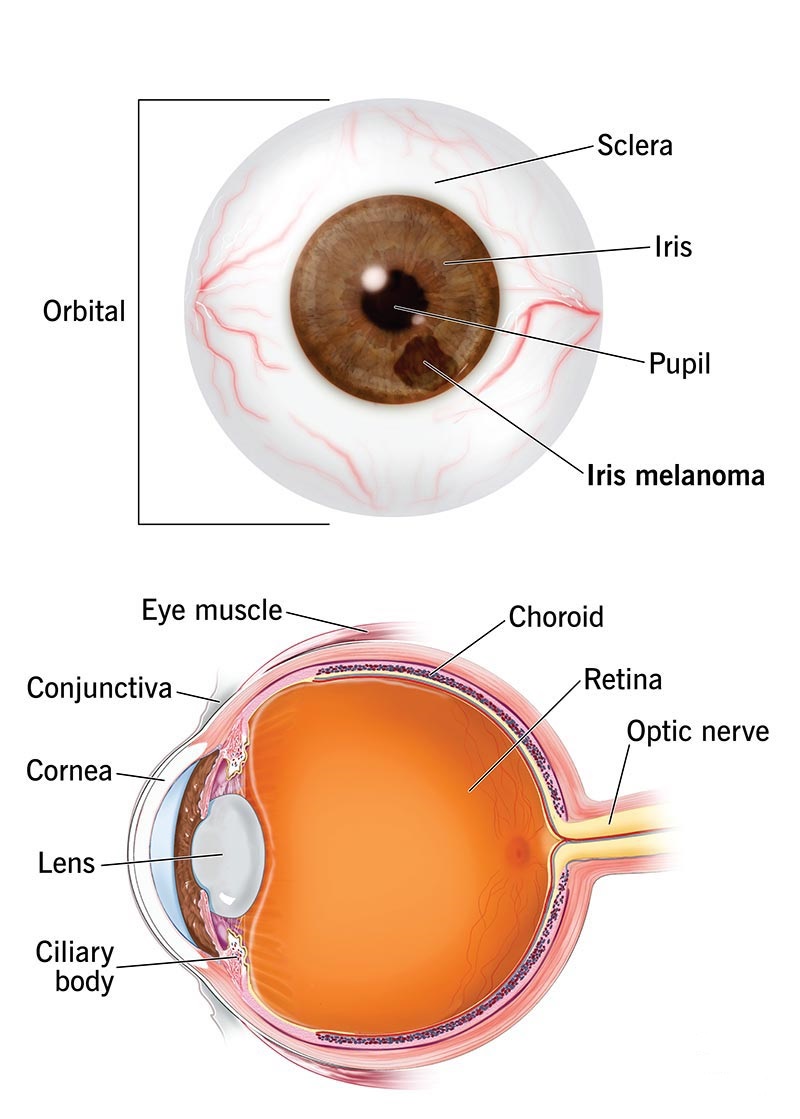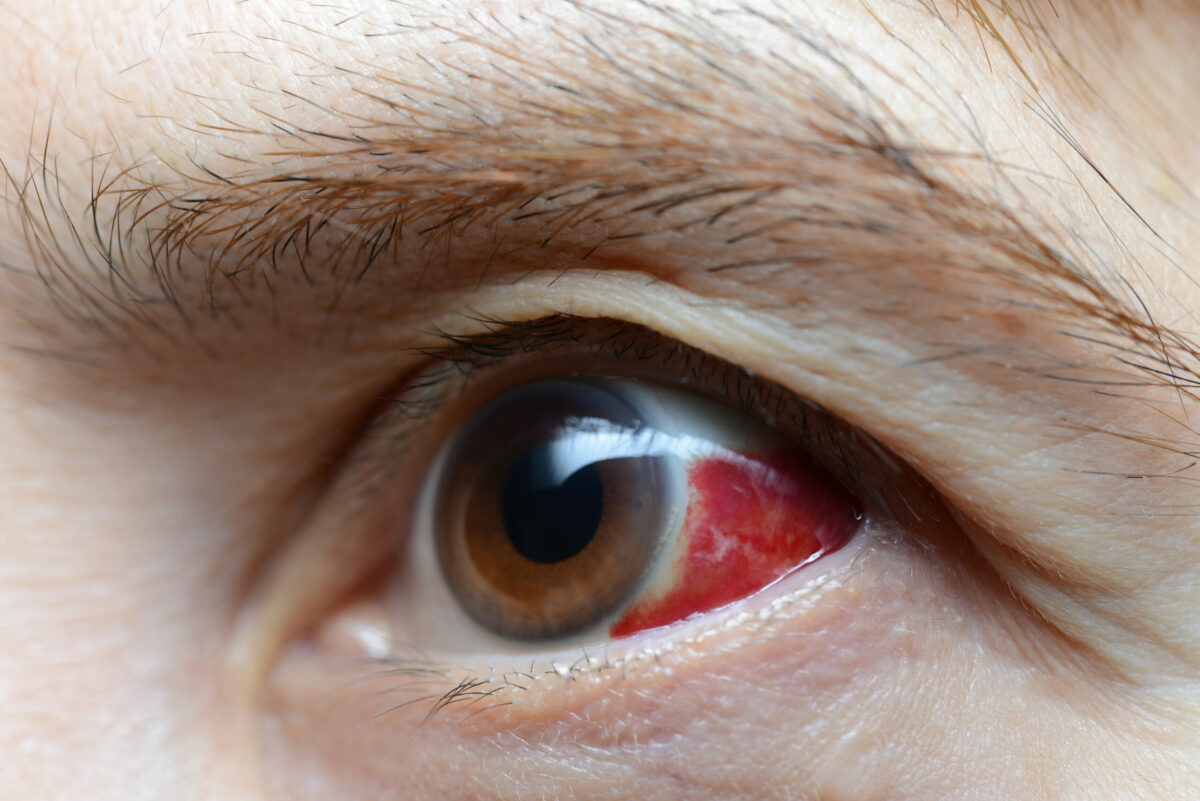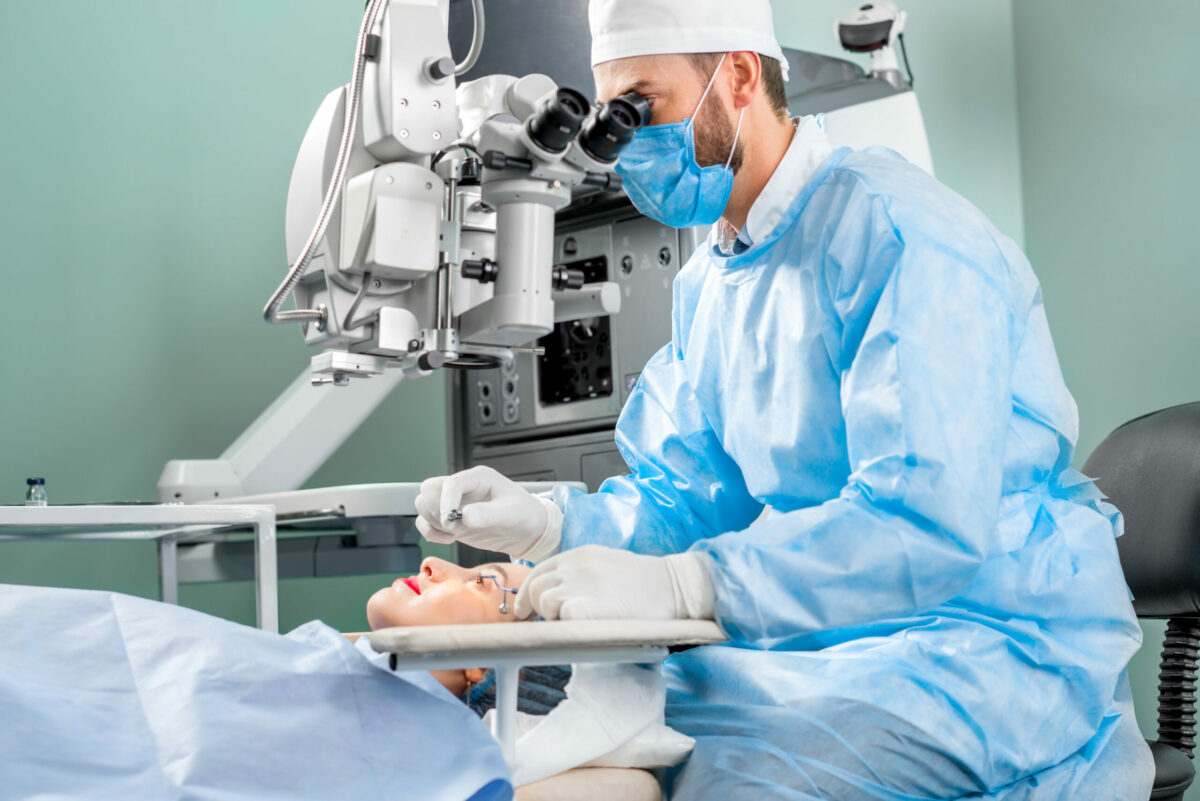Commonly, eye cancer begins inside the eyeball and in near tissues (including eyelids, tear ducts, and others). While eye cancers are very rare, one of the most common types is uveal melanomas. This cancer type usually starts in the middle of the eye (uvea) and retinoblastoma. Healthcare providers usually prescribe radiation therapy, brachytherapy, and surgery.
What is Eye Cancer?
Eye cancer can happen very rarely and it usually begins in the eye and surrounding structures. When the cancer cells begin to multiply out of control, they form a tumor, which can be cancerous (malignant) and noncancerous (benign). Therefore, malignant tumors may grow into  cancer and spread throughout your body. Furthermore, early diagnosing and treating eye cancers usually just prevent the spread.
cancer and spread throughout your body. Furthermore, early diagnosing and treating eye cancers usually just prevent the spread.
Eye Cancer Types
Physicians categorize eye cancers on where they begin and their location.
Intraocular Melanomas
Melanocytes usually provoke intraocular melanoma, which is the same cell that causes the most serious skin cancer (melanoma). Approximately all eye cancers are melanomas and occur in the middle region of your eye (uvea). They are also called uveal melanomas. For example:
- Iris Melanoma – In most cases, this melanoma appears in the colored part of your eye or iris and it tends to grow slowly. Moreover, it also makes a dark growing spot that stands against your iris.
- Ciliary Body Melanoma – The ciliary body is behind your iris. The melanoma forms in the muscles that adjust the eyeball lens.
- Choroidal Melanoma – It often appears in the layer of the eyeball. Additionally, the most common site for eye melanoma is choroid.
However, in some circumstances, melanomas can occur in the conjunctiva. This is a membrane that covers the front part of the eyeball. While conjunctival melanomas are very rare, they tend to spread and are aggressive.
Eyelid and Orbital Cancer
This eye cancer type commonly forms in the tissues near the eyeball and is called Orbital or Adnexal Cancer. Therefore, orbital cancers appear in your orbit or tissues including muscles and nerves that move your eyeball. However, adnexal cancer forms in the supporting tissues such as eyelids and tear glands. Physicians categorize these cancers according to the cell that transforms into cancer. Examples include:
- Squamous Cell Carcinoma – Appears from squamous cells in the top layer of the skin.
- Basal Cell Carcinoma – From the basal cells in the top layers of the skin.
- Rhabdomyosarcoma – Inside the muscle tissues.
Retinoblastoma
This is a malignant tumor that occurs from the retina in the back of your eye. It commonly appears in children under 5 years old.
Intraocular Lymphoma
Intraocular lymphoma usually forms in the white blood cells (lymphocytes) and it is a rare form of B-cell lymphoma. People over 50 years old are more likely to develop this cancer type. Those who experience intraocular lymphoma also have primary central nervous system lymphoma (PCNSL). This is a cancer that usually impacts different parts of the central nervous system (such as the brain, spinal cord, spinal fluid, and others).
How Common is Eye Cancer?
This cancer type is extremely rare and occurs in 3,400 people each year in the United States. However, it is more common that cancers start in other parts of the body and spread to the eye. In addition, if the cancer does not begin in the eye, physicians do not consider it as eye cancer.
Furthermore, intraocular melanomas are considered the most common eye cancer type and it commonly starts in the middle of the eye and choroid. About 2,500 people are diagnosed with this cancer type every year in the U.S.
Symptoms
While most people with eye cancer do not have any symptoms others may notice some of them. However, people with eye cancer start to notice any symptoms when the tumor is growing. Moreover, not every time you experience the following symptoms necessarily mean you have cancer. There are different benign (noncancerous) eye conditions that show similar symptoms. To make sure you do not have eye cancer, you should consult a doctor.
Usually, painless vision loss is one of the most common symptoms of eye cancer. Check below for other symptoms that may mean you have eye cancer:
- Floaters (seeing flashes of light, squiggly lines, or spots)
- Vision loss (either partial or complete)
- Blurred vision
- A bulging eye
- Irritation of the eye that does not disappear
- Dark spots in your iris
- A growing lump in the eyelid or eyeball
- Changes in the eyeball’s position
Do not hesitate to visit your doctor if you notice any of the previous symptoms.
Additionally, the first symptoms that mean a person has eye cancer are enlarged blood vessels and a dark spot. To determine whether you have eye cancer or not, you should consult an optometrist or ophthalmologist.
Causes
Generally, eye cancer happens when cells start to divide and multiply without control, forming a mass usually called a tumor. In some cases, these tumors can break off and spread to other parts of your body through lymph nodes and bloodstream. This effect can provoke the forming of other new tumors in other organs. This process is called by physicians spread or metastasis. However, experts still research why healthy cells become cancer cells.
Risk Factors
Check below some risk factors that could increase your risk of developing eye cancer:
- Age – Most eye cancer cases are diagnosed in people over 50 years old, an exception is a retinoblastoma that impacts children under 5 years old.
- Skin Color – White people who have pale skin are more likely to get eye cancer.
- Eye Color – Eye cancer is more common in people with light eyes (blue or green) than those with dark eyes (brown).
- Inherited Conditions – There are some health conditions that could elevate your risk of eye cancer. Examples include dysplastic nevus syndrome, BAP1 tumor predisposition syndrome, and others.
- Sunning and Tanning – Some research suggests that exposure to UV rays may increase the risk of intraocular melanoma. However, more researches are required.
Diagnosis
In most cases, ophthalmologists or ocular oncologists diagnose this cancer type. They may also perform some procedures to exclude other eye conditions before a cancer diagnosis.
Eye Examination
During an eye examination, they will check for dark spots, enlarged blood vessels, eyeball moving, and others. In addition, they may also use special tools to verify the structures in your eye in more detail.
- Slit Lamp – It is a device that uses a light source and special lenses. It helps to see the front and back of your eyeball in detail.
- Ophthalmoscope – This instrument helps to view structures in the back of your eyeball (such as the retina). It contains multiple lenses and light.
Imaging
These tests usually help to diagnose eye cancer. Examples include:
- Fluorescein Angiography – During this procedure, your physician will inject dye into the bloodstream. This will help to get clearer images. Thereafter, a physician uses a special camera that shows how blood is flowing in the eyeball.
- Ultrasound – This test helps to determine how the location and size of the tumor. Ultrasounds are useful in diagnosing intraocular melanomas.
However, if your healthcare professional thinks the cancer has spread to other parts of the body, you may need additional tests. Examples include:
- Chest X-ray
- CT scan
- MRI
- PET scan
Biopsy
Doctors during this test, remove a small sample of tissue from the tumor and check it for cancer cells. In any case, most eye cancers are diagnosed by physical examination and imaging. A biopsy is done to determine how aggressive the cancer is and what treatments would be best for you. There are three biopsy types. For example:
- Incisional and Excisional Biopsy – During this test, your doctor will remove either a part (incisional) or entire (excisional) tumor to check for cancer cells.
- Fine Needle Aspiration Biopsy – Healthcare providers will test the eye fluid for cancer cells. They get this eye fluid using a tiny needle that helps to remove a fluid sample.
Additionally, in case of cancer spreads, the liver is the common place for eye cancer to go.
Treatment
Your healthcare professional may delay the treatment, especially if it is not clear whether you have eye cancer or not. Check below some treatment options:
Radiation Therapy
- External Beam Radiation Therapy (EBRT) – This therapy involves a machinery that sends exact and high doses of radiation directly to the tumors.
- Brachytherapy – This is one of the most common treatment options for eye melanomas. During this procedure, a doctor will implant a small disc near the tumor, which helps to destroy cancer cells using radiation.
Surgery
This is another common treatment option for small tumors that have not spread anywhere from the eyeball. Examples include:
- Enucleation – This surgery usually is done if a person experiences large tumors. The doctor will remove the eyeball and after that, you will get an artificial eyeball.
- Orbital Exenteration – In such cases, the doctor removes the eyeball completely and maybe some near tissues. Thereafter, you will get an artificial eyeball implant, as with enucleation.
- Transscleral Resection – This surgery type is used to remove melanomas from your ciliary body and choroid.
- Iridocyclectomy – This procedure is used to treat small melanomas and the doctor will remove a part of the iris and ciliary body.
- Iridectomy – Mostly, doctors use this surgery to treat small melanomas. This surgery involves the removal of a part of your iris.
Check below for other eye cancer treatments:
- Immunotherapy – These treatments help the body’s defense (immune system) to identify and kill cancer cells.
- Targeted Therapy – These medications target weaknesses in the cancer cells and destroy them.
- Laser Therapy – This procedure involves heat to kill eye cancer. One of the most common laser therapies is Transpupillary Thermotherapy (TTT).
- Chemotherapy – This therapy is used less commonly than those listed above but your doctor may prescribe chemotherapy when others are not effective for you. It also may be used if the cancer spreads to other parts of your body.
What Treatment Side Effects May Happen?
The adverse reactions fluctuate among patients. It depends on the severity of the eye cancer and the type of treatment. The most common side effects are partial or complete vision loss. However, discuss with your healthcare professional for more details.
Frequently Asked Questions
How can I prevent eye cancer?
Unfortunately, it is not possible to prevent this cancer type. In any case, you can improve the prognosis by getting regular check-ups, early diagnosing, and suitable treatment. For example, if you have a family history of retinoblastoma and have children, it is recommended for them to have regular eye examinations for cancer.
Is eye cancer curable?
The outcomes of the treatment vary among people because it is based on the location and size of the tumor, how much it is spread, and others. However, approximately 95% of small and medium intraocular melanomas can be removed by brachytherapy. Anyway, eye cancer may not be curable. Ask your healthcare provider if you have any questions.
What is the survival rate of the cancer of the eye?
The survival rate depends on when eye cancer is diagnosed. For example, if your doctor diagnoses an intraocular melanoma early, the survival rates are excellent. In case your physician diagnoses this cancer type when it spreads to other organs, the survival rate is not good.
Fortunately, physicians usually diagnose most eye cancers before they spread throughout your body.




